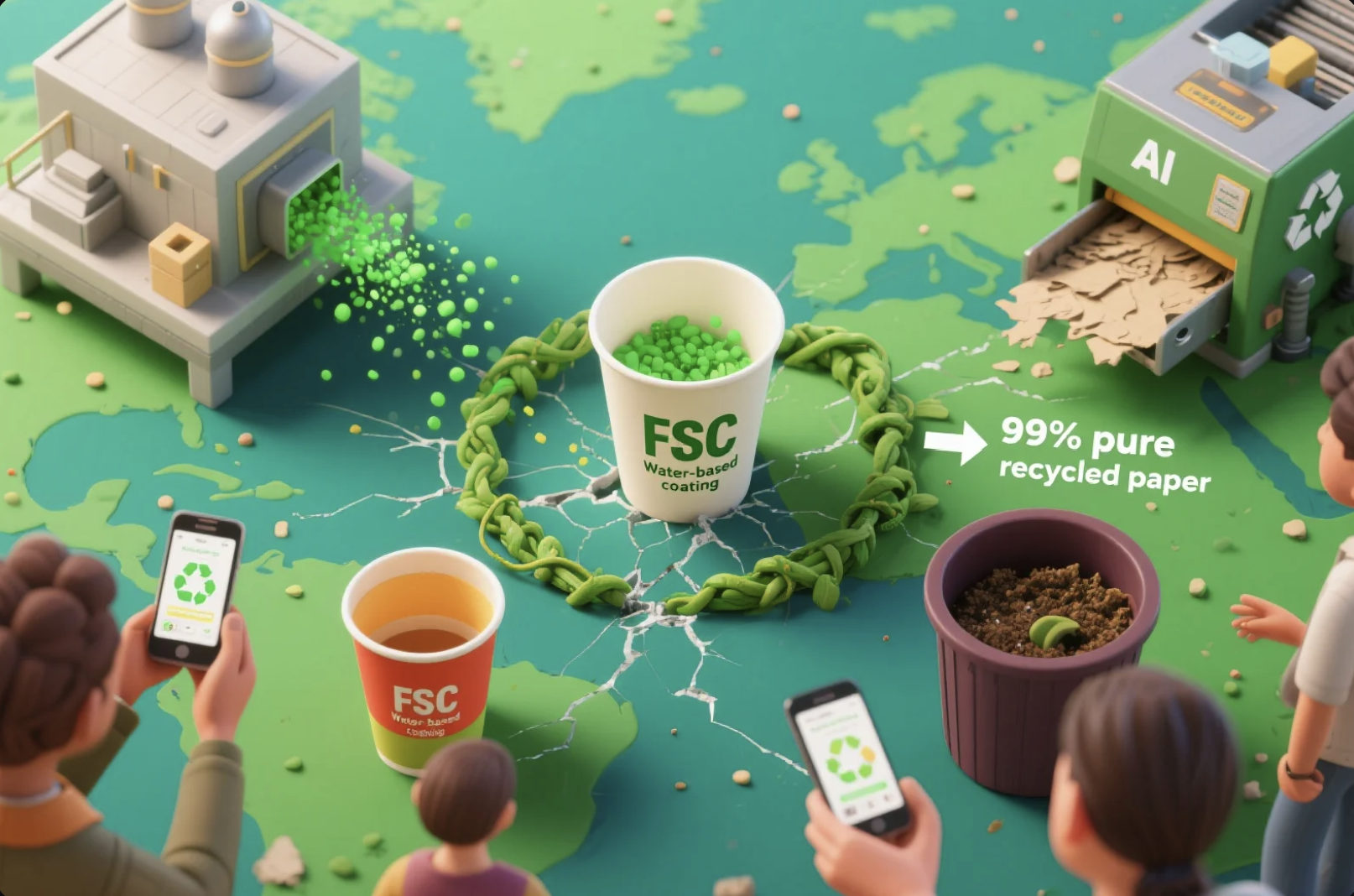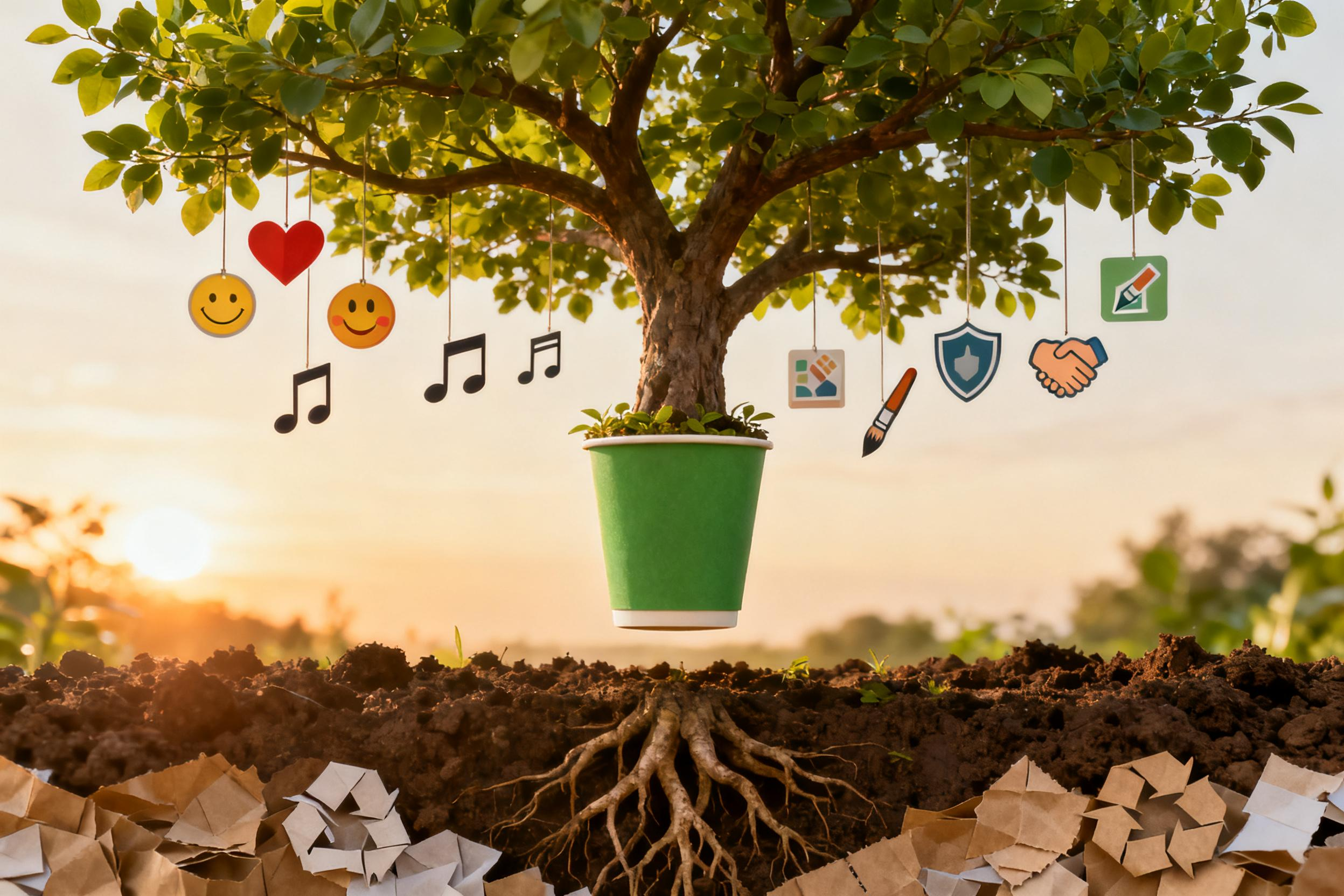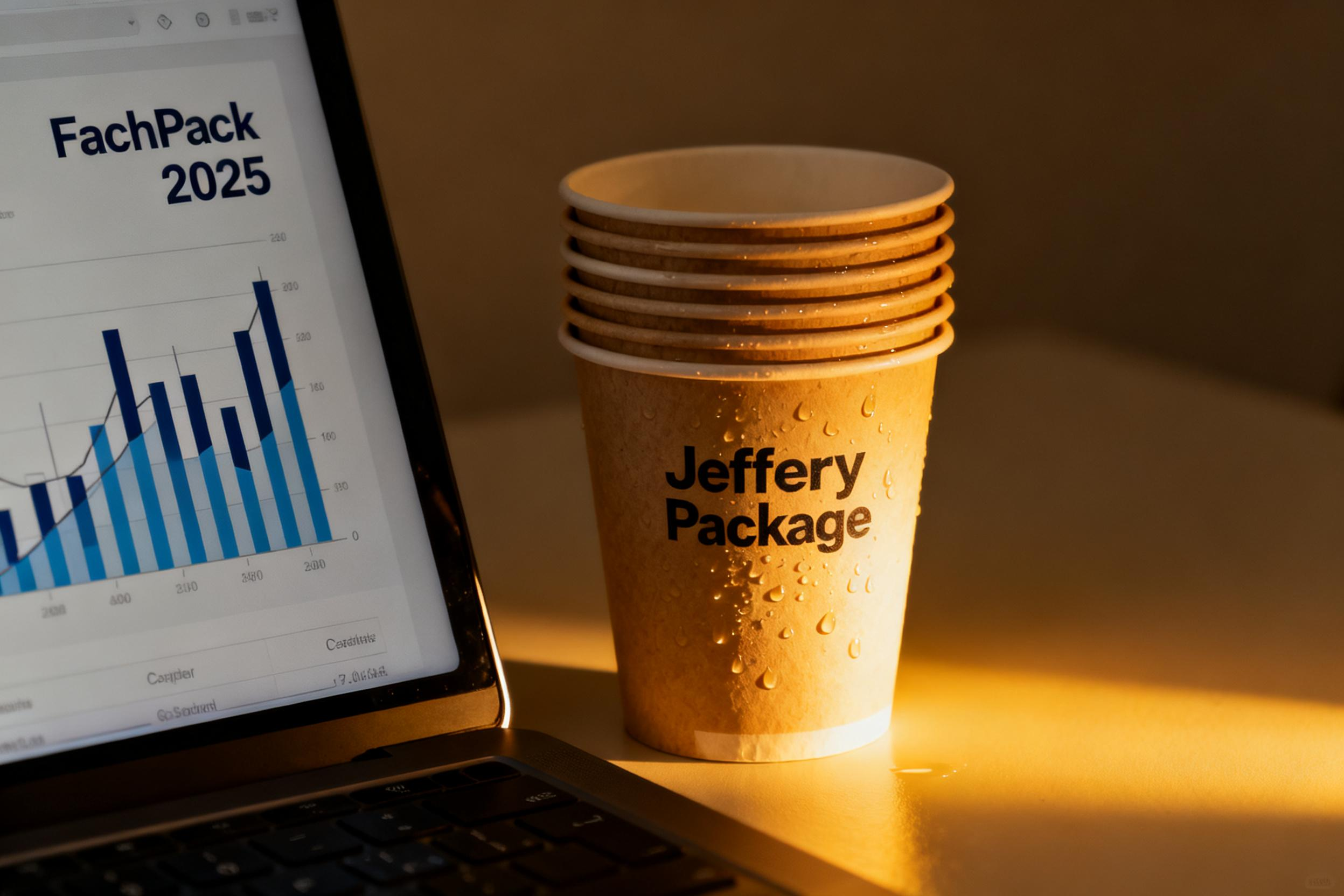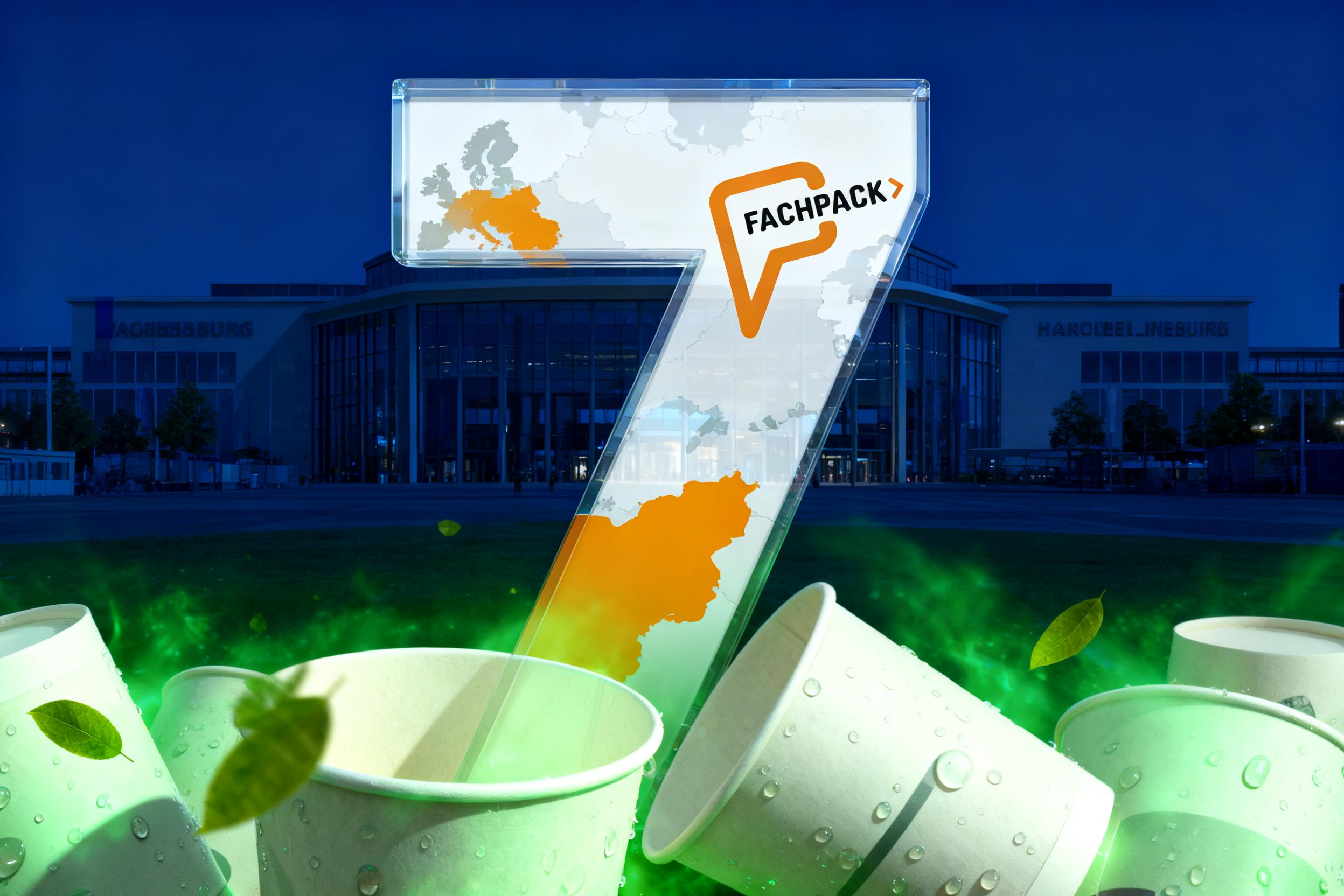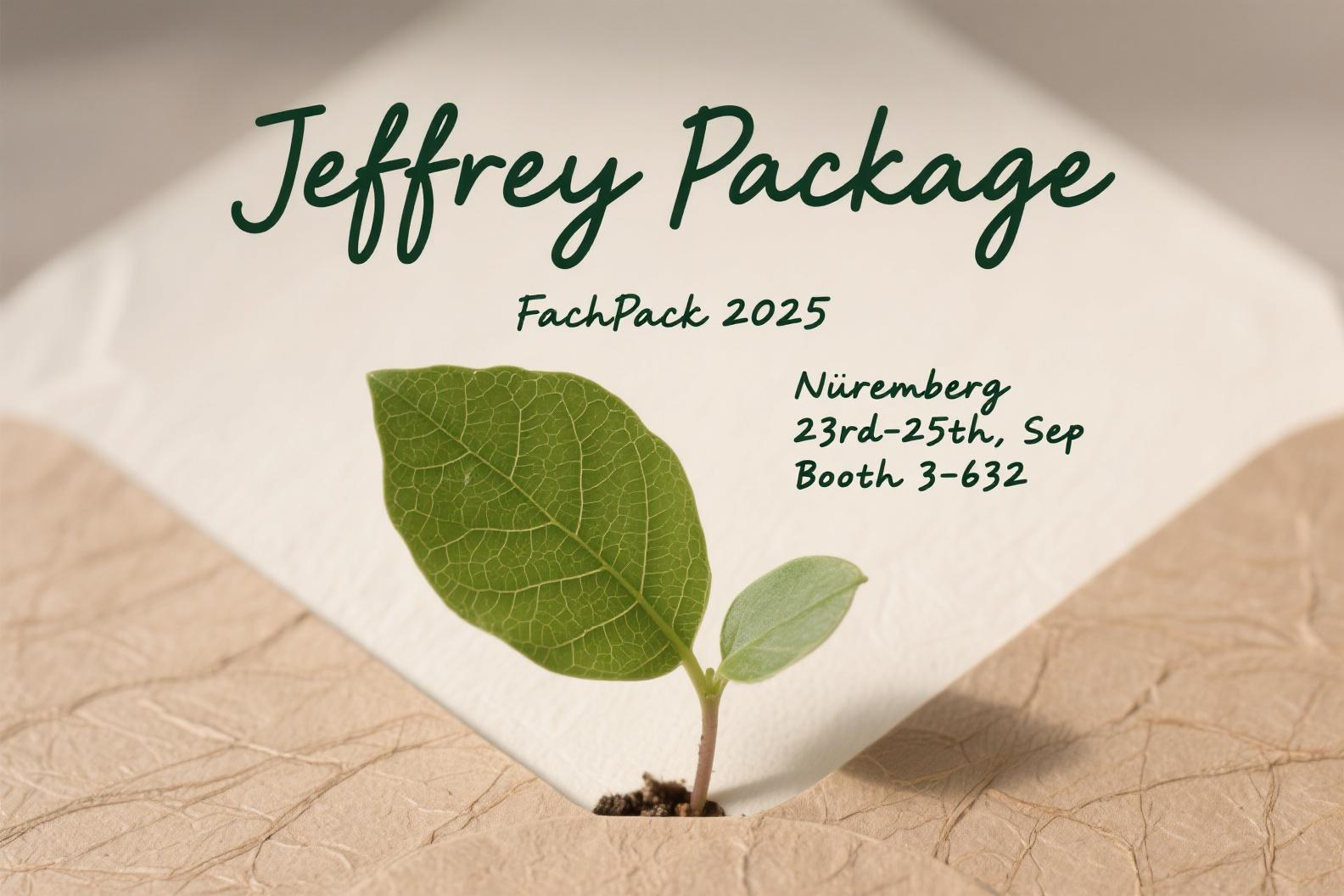Beyond the Binary: Why Sustainable Packaging Thrives in a Multi-Solution Ecosystem
How Producers, Consumers, and Recyclers Can Co-Create a Circular Future
The sustainability debate often pits “single-use” against “reusable” packaging. But what if the real answer lies in the synergy of both?
At Jeffrey, we champion a radical idea: true sustainability emerges not from dogmatic choices, but from a harmonized ecosystem where producers, consumers, and recyclers collaborate across diverse solutions. Our water-based coated paper cups embody this philosophy—bridging functionality, affordability, and circularity. Here’s why embracing multiplicity is the only path forward.
1. The Flawed Battle: Single-Use vs. Reusable
1.1 The Incomplete Truths
-
Reusable Systems: Ideal for controlled environments (e.g., cafés with return infrastructure), but face hygiene risks and high carbon footprints in logistics for perishable goods.
-
Single-Use Solutions: Criticized for waste, yet vital for food safety in healthcare or events. Recent innovations like water-based coating enable 3-month composting, challenging the “disposable equals evil” narrative.
1.2 The Real Culprit: Monoculture Thinking
Forcing one-size-fits-all solutions ignores context:
-
A reusable cup in a Berlin office park ≠ a compostable cup at a Mumbai street festival.
-
Regulatory fragmentation (e.g., EU’s PPWR vs. China’s GB standards) demands adaptable designs.
Sustainability isn’t black or white—it’s contextually green.
2. The Hybrid Hero: Water-Based Coated Paper Cups
2.1 Engineering the Balance
Jeffrey’s cups merge the best of both worlds:
-
Circular Performance:
-
180-day soil degradation (vs. 500 years for PE)
-
Compatible with standard paper recycling globally—no separation needed
-
-
Reuse-Ready Durability:
-
Bamboo fiber + water-proof coating withstands+ reuses for coffee/tea.
-
2.2 The Affordability Advantage
| Metric | Traditional PE Cup | Reusable Stainless Cup | Jeffrey Water-Based Cup |
|---|---|---|---|
| Unit Cost | $0.02-$0.03 | $12.00 | $0.03-$0.04 |
| Carbon Footprint (per use) | 0.08 kg CO₂e | 0.02 kg CO₂e (after 100 uses) | 0.04 kg CO₂e |
| Recycling Rate | <5% | 70% | 90% |
*For high-turnover venues (e.g., stadiums), our cups cut waste by 40% vs. reusables lost to “souvenir effect” .
3. The Ecosystem Playbook: Aligning Stakeholders
3.1 Producers: Innovate for Context
-
Modular Design: Cups with detachable paper lids (compostable) + paper bodies (recyclable).
-
EPR Integration: Embed QR codes linking to local recycling guides—reducing contamination by 30%.
3.2 Consumers: Empower Through Simplicity
-
“Bin Right” Labeling: Color-coded icons (🟩 = Paper Bin; 🟫 = Compost) on cups.
3.3 Recyclers: Tech-Enabled Sorting
-
Blockchain Tracking: Trace cup-to-pulp conversion in real-time .
-
AI-Pulsed Separation: Hydrocyclers isolate water-based coatings in 15 sec, boosting pulp purity to 99%.
4. The Future: Context-Driven Synergy
-
Smart Packaging: The alarms will work if cups enter non-recyclable waste streams.
-
Policy Partnerships: Advocate for EPR credits for brands using certified circular materials.
In nature, ecosystems thrive on diversity. So should packaging.
Call to Action:
-
For Brands and Package Wholesale: click and check our water-based coating paper cups for sustainable package solutions.

